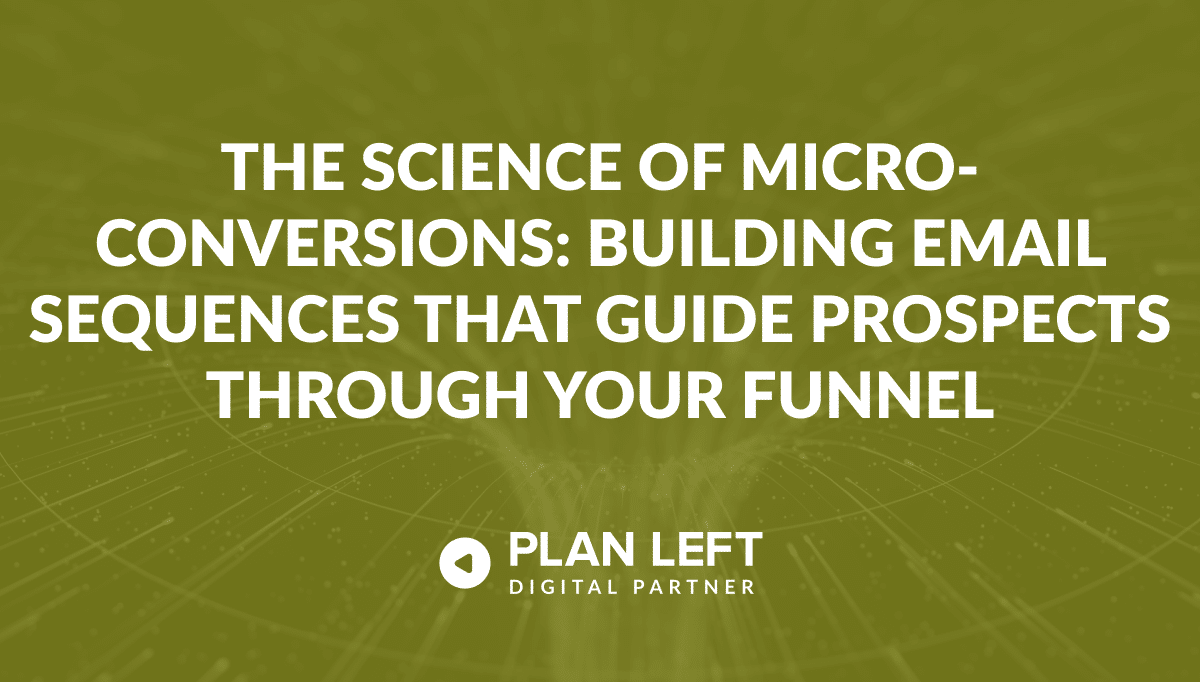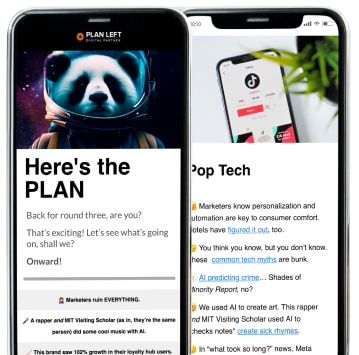
AI is having another moment with Google Ad integrations, new reasoning AI models, and AI image labeling. Additionally, Google talks about why image alt text is still important for SEO even with the prevalence of AI and we share updates to multiple Google crawler documents.
Google Ads New Tools & Features
Google Ads has introduced several improvements and expansions to its AI-powered tools and features. Collectively, these changes highlight Google’s use of AI technologies throughout the advertising process, from campaign setup to performance optimization, with the goal of improving ROI for advertisers of all sizes.
Language Expansion
Google is expanding its AI-powered search campaign-building tool to support more languages. Currently available only in English, the tool will soon support German, French, and Spanish. This expansion will allow more small businesses globally to benefit from the AI-assisted campaign creation process.
Enhanced Creative Assets
Google is extending its AI-powered ad image editing capabilities beyond Performance Max campaigns to include search, Display, App, and Demand Gen campaign types. This feature will help advertisers create and optimize visual assets more efficiently across various campaign types.
New Performance Max Insights and Controls
Google Ads is rolling out new insights and controls for Performance Max campaigns:
- Asset Group Reporting: Advertisers can now view performance data for individual asset groups, helping them understand which combinations of creative assets are most effective.
- Audience Signals Reporting: This feature provides insights into how different audience signals contribute to campaign performance.
- Campaign-Level Negative Keywords: A beta launch allows advertisers to exclude certain keywords at the campaign level for Performance Max Search campaigns, offering more control over ad targeting.
AI Ad Image Editing
Google has brought AI-powered image editing tools to search and display ads. These tools are expected to streamline the ad creation process and improve visual asset quality across different campaign types:
- Background Removal: Automatically remove backgrounds from product images.
- Image Resizing: Adjust image dimensions to fit various ad formats.
- Text Overlay: Add text to images for promotional messaging.
- Logo Detection: Identify and reposition logos within images.
Optimization Enhancements
For Demand Gen campaigns, Google is introducing new optimization levers, such as omnichannel bidding, to maximize online and in-store conversions. Additionally, Display & Video 360 integration is being implemented to improve campaign management and performance.
Google Talks AI and Image Alt Text
Google’s John Mueller responded to a question on Reddit about the relevance of alt text in the era of AI and computer vision, specifically the relevance around Alt Text and its continued importance for SEO. Spoiler alert: Alt text remains a vital component of any SEO strategy.
Source: Reddit
Importance of Alt Text
Alt text provides context that helps search engines understand the image in relation to the surrounding page content. This is crucial for accurately indexing and displaying images in search results.
Additionally, alt text connects images directly to the page content, reinforcing the centerpiece annotation of the content, enhancing both user experience and search engine understanding. It remains a unique opportunity to convey specific information that AI might miss.
Lastly, its a key role in aiding those who use tools like screen readers to access the internet, and a large part of website accessibility.
Images and the Shortcomings of AI
While AI can identify objects within an image, it often lacks the ability to understand the image’s context within a webpage. For example, a photo of a beach could represent various scenarios, such as a vacation spot or the site of an environmental issue.
Relying solely on AI to generate alt text may result in generic descriptions that don’t fully utilize the potential of alt text for SEO. AI might describe an image as “Three small wooden cabins with green roofs nestled among towering redwood trees in a sunlit forest, surrounded by lush ferns and greenery.” But what is missing are keywords and context like “Hotel [Name] with small wooden cabins with green roofs nestled in [Name] Redwood Forrest in [Location].”
Source: Perplexity.ai
Alt text provides context that AI alone cannot offer only for users of abilities but also search engines.
Reasoning AI: Letta and OpenAI’s O1 Model
Two significant developments have recently emerged, promising to revolutionize how AI models reason and interact with users.
UC Berkeley’s startup factory has given birth to Letta, a highly anticipated AI startup that has just come out of stealth model. Founded by PhD students Sarah Wooders and Charles Packer, Letta is built on the popular open-source project MemGPT.
While Letta focuses on memory enhancement, OpenAI has introduced its o1 model, which takes a different approach to improving AI reasoning capabilities.
Letta
Letta’s technology addresses the limitation of current AI models, which are unable to retain information across conversations. This breakthrough could improve applications from customer support bots to healthcare symptom-tracking apps.
Key takeaways of Letta:
- Helps AI models remember users and conversations
- Mitigates the stateless nature of traditional LLMs
- Enables AI agents and chatbots to maintain long-term memory
OpenAI o1 Model
The OpenAI O1 model’s architecture allows it to “think” and verify information before responding, potentially reducing errors and hallucinations common in other AI models.
Highlights of the o1 model:
- Multistep reasoning process
- Inherent ability to maintain state
- Improved fact-checking before responding
The Open Source Debate
An interesting aspect of these developments is the contrast in approaches. Letta is positioning itself as an open-source alternative to OpenAI, arguing that transparency is crucial for building reliable AI applications.
This stance taps into the continued debate between open-source and proprietary AI models. As AI continues to advance, the focus on enhancing reasoning capabilities and memory retention is likely to intensify.
Watercooler Highlights
To help break down information about Google crawlers into easy-to-digest pieces, Google has updated multiple documents related to its crawlers. In conjunction with the Coalition for Content Provenance and Authenticity (C2PA), Google is bringing AI image labeling to your search results, images, and ads.
Updated Google Crawler Documents
Google has recently updated its crawler documentation intending to make the content more user-friendly and informative.
Splitting Up Documentation
Google has split its crawler documentation into four distinct pages:
Breaking these out allows for adding more information for each type of crawler without overwhelming users with a single, lengthy document.
Source: Google Search Central
New Information Added
Splitting up the documentation was only part of the update. Google has also included some new and updated information, including technical properties of crawlers, user agent strings, and information on content compression supported by Google’s crawlers.
What This Means for Users
While Google’s crawlers do not change their behavior, this update simplifies their content, making it easier to find specific information about particular crawlers and how they interact with websites. This is especially helpful for those with a non-tech background who still want to stay current with Google updates and best practices.
Google AI Image Labeling
AI labeling is coming to Google thanks to its partnership with the Coalition for Content Provenance and Authenticity (C2PA). This collaboration marks another step toward added transparency for AI-generated content across Google’s platforms. Google already has optional support for labeling AI-generated or AI-manipulated images via photo metadata—something incorporated back in July 2024.
Integration of C2PA Metadata
In the coming months, Google plans to integrate C2PA’s metadata into its products, including Search, Images, and Ads. This means that users will soon be able to see labels indicating whether an image was created or altered using AI tools. The “About this image” feature will provide context to help users understand the origins of the content they see online.
Source: Plan Left Google Search
Google has played a pivotal role in developing version 2.1 of the C2PA standard, which strengthens protection against tampering and protects the reliability of content provenance data to combat misinformation and build trust in digital media by clearly identifying AI-generated images.
Moreover, Google is expanding this labeling effort to its advertising systems, making sure that ads featuring AI content comply with updated policies. YouTube is also in the mix, as Google explores ways to label videos that are either created or modified using AI technologies.
With all of that, Google is realistic about the scope of effort it will require to make this successful, stating, “Establishing and signaling content provenance remains a complex challenge, with a range of considerations based on the product or service. And while we know there’s no silver bullet solution for all content online, working with others in the industry is critical to create sustainable and interoperable solutions. That’s why we’re also encouraging more services and hardware providers to consider adopting the C2PA’s Content Credentials.”
Explore Latest Posts
Struggling with email marketing that generates opens and clicks but fails to deliver actual business results? The gap between engagement ... read more
July 17, 2025
Language should never be a barrier to digital access. Yet for millions of users worldwide, multilingual websites often become labyrinths ... read more
July 16, 2025
Accessibility has evolved from a nice-to-have feature into a fundamental business requirement. Organizations that treat accessibility as an afterthought often ... read more
July 14, 2025
Essential Strategies for Entrepreneurs
Get Actionable Business Insights & Marketing Tips
Our newsletter delivers real-world strategies from entrepreneurs who’ve been exactly where you are.
Sign up now for:
- Actionable growth strategies that work
- Insider tactics for attracting top talent
- Real-world case studies from successful founders
- Emerging tech trends that drive innovation
- Pragmatic marketing approaches for visionary leaders








